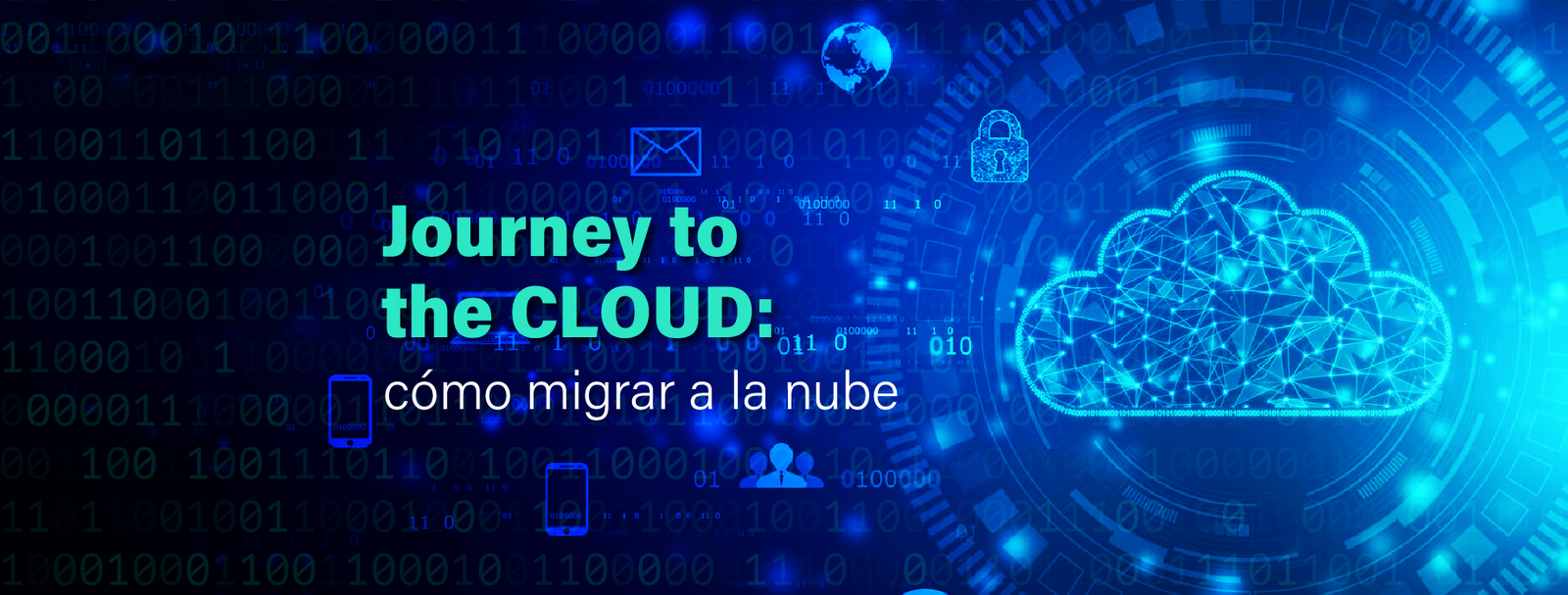Journey to the cloud: what it is and what are the key aspects to take into account
The interest of companies in migrating their applications, data, servers and storage from traditional local infrastructures (on premise) to cloud services is increasing. In fact, the trend is accentuated as the needs of organizations increase. Improve your scalability, flexibility and agility.
In view of the current scenario, in which organizations are increasingly likely to analyze migration to hybrid infrastructures or 100% cloud that allow them wide availability, we propose what is, according to our experience, the path that must be followed to implement a Journey to the Cloud.
In this article we explore the analyses and forecasts that must be considered for a migration project to have a happy ending.
Cloud market news
By 2024, end-user spending on public cloud services worldwide is projected to total $678.8 billion.
This was reported by Gartner, noting that, compared to the $563.6 billion generated by the cloud market in 2023, the figure estimated for this year would represent a annual increase of 20.4%.
According to the consultancy, all segments of the cloud market are expected to experience an increase in their volumes in the coming months:
- +26.6% Infrastructure as a Service (IaaS)
- +21.5% Platforms as a Service (PaaS)
These indicators focus on the characteristics and impact of the path towards migrating infrastructure and resources to the cloud.

What does “Journey to the Cloud” mean and what impact does it have on businesses?
Journey to the Cloud It is a concept that has been in place for many years in the IT areas of companies, which had been working practically 100% with local physical infrastructures (on premise) and began to evaluate the migration of their resources to the cloud.
“In the journey to the cloud, the idea is to accompany the evolution of the business, with a strategy of implementing infrastructure mounted on clouds. These can be located anywhere in the world and provide the benefits of having the Infrastructure available 24 hours a day, 365 days a year, which allows business continuity, improvements in performance, agility, costs and accessibility, among other advantages," he highlights. Carlos Lebherz, Technology Services Manager IT Patagonia.
It involves putting together a roadmap, doing a survey and understanding that, beyond what migration implies at the cost level, it also brings benefits of improvements in the general infrastructure.
To put together a work roadmap and establish the steps to follow, there are many factors to consider, starting with the current situation in terms of infrastructure.
In other words, what needs to be migrated first, what is recommended to be migrated initially, and what benefits the migration will bring depend on your particular starting point.
In this sense, Carlos explains that, by implying a potentially higher investment or cost than that at the beginning of the project, The benefits of migrating sometimes do not come at the cost level from day zero, but rather have their starting point in improvements in performance or the level of availability of the infrastructure.. And as the plan is executed, other benefits emerge and the strategy positively impacts all aspects of the business.
Aspects to consider when planning a successful migration
“Beyond the fact that an organization may have the idea of making a journey to the cloud, the first thing is understand what the core and objectives of the business are“And from there, see if it is the ideal time to migrate your infrastructure to the cloud, or if it is advisable to start putting together a stabilization or improvement process in the current infrastructure, in order to move forward later,” he adds.
Understanding the current situation of the infrastructure and putting together a specific roadmap with the organization, in which the milestones and deadlines are established and making a detailed assessment of the current situation, is the the basis that is needed to be able to put together a plan that can be successful.
This survey does not only cover infrastructure, but also involves understand the processes and understand the needs of the rest of the corporate areas, taking into account that each of them carries out their daily work on systems that run on the infrastructure that is being evaluated for migration.
In terms of processes, it is important to be clear about which ones will be impacted when starting to migrate the infrastructure, and what improvements or disruption times could occur.
The final objective should be that the path to follow when making the migration be as effective as possible and generate the least possible impact on the business, and that it is only a positive impact.

Main pain points for companies when evaluating a migration to the cloud
Organizations considering their journey to the cloud have a variety of triggers.
The main ones are usually the possession of obsolete infrastructures and dead times caused by power outages or Internet problems. Also, Slowness in scaling their products or infrastructure.
For example, if today you need to scale a product or application that is running on an on-premise server, the ability to do so is usually tied to having the necessary parts, being able to assume the costs involved, and not having problems with imports.
This means that the business or IT area does not end up being agile.
“Having all or part of the infrastructure running on a cloud solution generates the agility to be able to scale and be much more efficient when improving business productivity. In addition to providing the support that the different areas need for their applications and processes,” says Carlos.
When should you migrate to the cloud?
The decision of when to start the journey to the cloud varies, depending on the needs and possibilities of each organization and, in particular, the processes they have running in their on-premise infrastructure.
A good prior analysis or understanding is essential. There may even be a situation where it is not advisable to migrate to a cloud environment, although there are very few cases in which this type of situation occurs.
“It always ends up being more of a business decision, and understanding what the business needs and objectives are and the implications of starting the journey, since projects take time to develop and require an investment at the time of deciding to migrate to the cloud,” reflects Carlos.
What role does application modernization play in projects?
Modernization is always tied to technology. On-premise infrastructures often contain applications that are already developed using old or obsolete languages or processes, or that have been superseded by new languages and technologies.
In situations like this, during a journey to the cloud process it may be convenient or ideal to think about making a refactoring or modernization of specific applications, using new technologies and ways of processing information. This is a decision that can bring the benefit of incorporating new functionalities or trying to improve applications.
According to our Technology Services Manager, “You should not go into too much modernization, as sometimes you can end up making the project slower or bringing more complications.This is because there are applications that cannot be migrated to the cloud using the technology in which they were developed, or that end up generating a higher cost if they were taken as is to the cloud.

What does monitoring services and processes entail?
Process monitoring has become a critical factor for all businesses, at all levels.
Today, having visibility into the status of a service or process running on a given application and infrastructure allows you to see the impact that will generate or is generating on the business.
Having monitored everything from an application to an Internet link or the performance of a server, brings information instantly, very useful for making decisions.
This is critical information that is necessary to know what action to take, which may indicate from the IT side, for example, that the processing capacity of a server needs to be increased or its memory increased.
At the business level, you can indicate the need to invoice in a different way, or implement an action plan to reduce the impact on the business.
Always having that information instantly and with monitoring, became a important benefit for all organizations.
Conclusion
Optimizing infrastructure management is important due to the consumption it generates and its impact in terms of sustainability, costs, performance, utilization and effectiveness. Especially, for its impact on the Improving the quality and efficiency of its services.
The challenges to achieving the expected benefits lie in ensuring that the infrastructure remains adequate and necessary to enable the business to operate.
One has to be clear about where infrastructure may be becoming obsolete or where it may be being over or under utilized. Be clear about where the business is going to put more focus on its core infrastructure and where it needs to always have it available.
That is to say, the current challenges are to ensure that the infrastructure has the highest possible availability and performance.
Challenges that, in most cases, are tied to having a hybrid infrastructure or directly 100% cloud, which ensures availability for as long as the business requires.
Hence, the importance of considering the convenience or opportunity of advancing on the journey to the cloud.
At IT Patagonia we offer a set of solutions that build a dynamic, flexible and secure infrastructure, capable of:
- Addressing the challenges of digitalization with precision.
- Reduce costs associated with IT infrastructure and services.
- Improve processes and achieve quantitative and qualitative impact on your systems.
- Resolve issues related to capacity.
Contact us for receive personalized advice.

